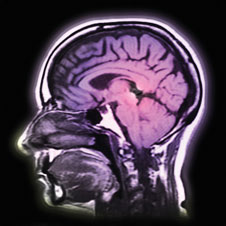 Friday 9 December 2016 12:02pm
Friday 9 December 2016 12:02pm
Several University of Otago researchers have gained funding to pursue innovative projects in the Neurological Foundation's latest grant round announced today.
Project grants:
Dr Karl Iremonger (Department of Physiology)
$11,615
Imaging the activity of stress neurons in vivo
Using cutting-edge technology to image the activity of stress neurons in a mouse model
Excessive activation of brain stress circuitry results in high levels of stress hormones in our body, which can damage our body and brain. Our understanding of this circuitry has been limited as no study has been able to observe the activity of stress neurons in the intact brain. Using cutting-edge genetic and optical techniques, Dr Iremonger's project aims to record the activity of stress neurons in freely behaving mice. Understanding how these neurons are regulated could lead to future tools that can be used to normalise stress neuron excitability in neurological conditions associated with high stress.
Dr Iremonger's study is generously supported by Mr Jeremy Collins.
Dr Tracy Melzer (Department of Medicine, Christchurch)
$162,422
Individual risk of dementia: enhanced precision with cortical thickness
Investigating the individualised risk score for future dementia in Parkinson's disease patients by measuring the thickness of the brain's cortical mantle
Parkinson's disease (PD) affects approximately 10,000 New Zealanders, and the incidence is increasing rapidly with our ageing population. Progression to dementia is a primary health care issue for PD patients and carers, but doctors cannot yet predict this progression. Using clinical and brain imaging data, Dr Melzer will create a method of generating an individualised risk score for dementia over time, including a measurement of the thickness of the cortical mantle in the brain. Such a unique advance in precision and personalised medicine would enable informed discussion between doctor, patient and carer about prognosis and life-choices. It would also provide a mechanism for recruiting the appropriate “at risk” people with Parkinson's disease into new trials of therapies aiming to prevent dementia.
Associate Professor Brian Hyland (Department of Physiology) is an Associate Investigator on another Parkinson's disease project, which is led by Professor Janusz Lipski of the University of Auckland:
Preclinical efficacy of Uptake-2 blockers in augmenting dopamine production from levodopa: implications for treatment of Parkinson's disease
Investigating the potential improvement of the effectiveness of a Parkinson's disease drug by inhibiting a mechanism in a rat brain model
$168,760
Summer studentship:
Niamh Cameron (Department of Anatomy)
Supervisor: Associate Professor Louise Parr-Brownlie
$6,000
Establishing a rat model of complex regional pain syndrome (CRPS)
Pain is an uncomfortable sensation that we all experience from time-to-time, but for one in five of us it becomes chronic and may last for many months or even years. One chronic pain condition called complex regional pain syndrome (CRPS), a neuropathic pain disorder, often begins with a fracture which develops into sensitivity to touch, heat and cold. Few effective medical treatments are available. Clinicians and researchers have a poor understanding of how and why CRPS occurs. As a first step towards finding better treatments, Ms Cameron will create a model of CRPS to enable researchers to explore changes in the brain associated with chronic pain.
A list of Otago experts available for media comment is available elsewhere on this website.
Electronic addresses (including email accounts, instant messaging services, or telephone accounts) published on this page are for the sole purpose of contact with the individuals concerned, in their capacity as officers, employees or students of the University of Otago, or their respective organisation. Publication of any such electronic address is not to be taken as consent to receive unsolicited commercial electronic messages by the address holder.
